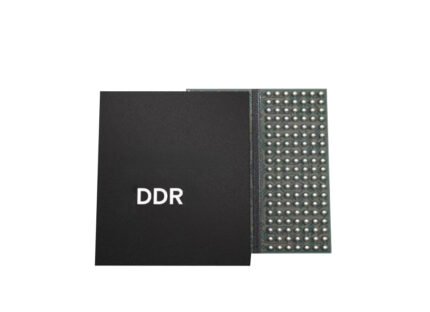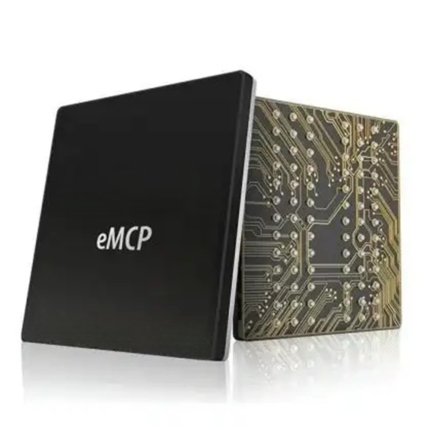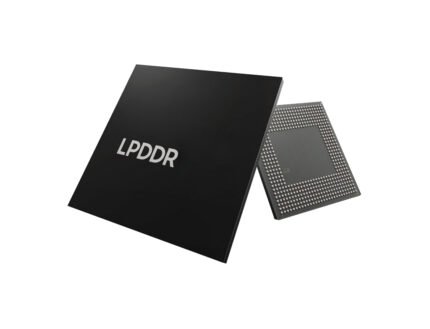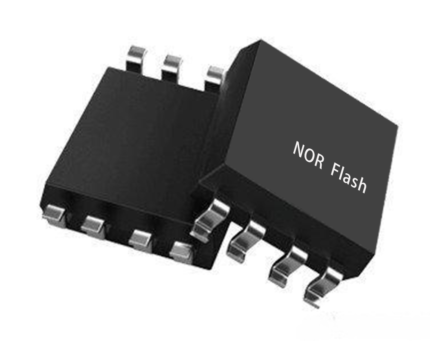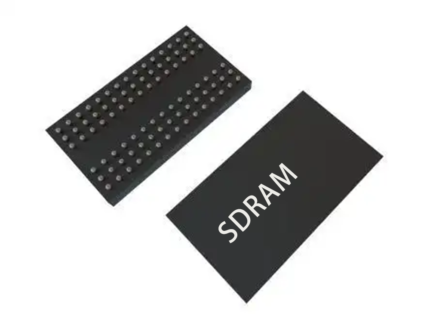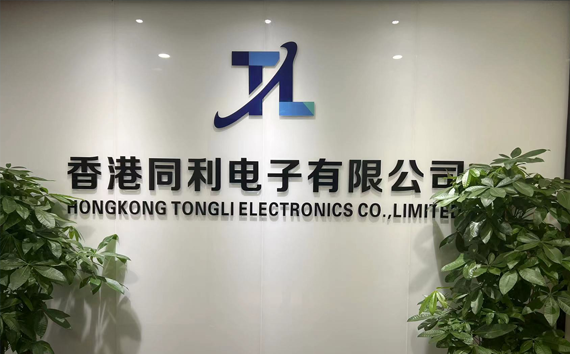DATECENTER SSD
An SSD (Solid State Drive) is a storage device that uses flash memory technology to store and retrieve data.
Basic Concepts:
1. The full name of SSD is Solid State Drive, that is, solid state drive. It is a storage device with no moving parts that uses NAND flash memory chips to store data.
2. The main advantages of SSDs include faster read and write speeds, higher endurance and reliability, lower power consumption, and noise-free operation.
Performance Advantages:
SSD's extremely short random access time, low read latency, high data transfer rate, and no fragmentation problems make it excellent on operating system and application startup.
SSDs support new technologies such as the DirectStorage API required for modern gaming.
DDR(1-5)
DDR (Double Data Rate) memory technology is a double-rate synchronous dynamic random access memory that is mainly used in personal computers and other real-time applications. DDR memory achieves higher data transfer rates by simultaneously transmitting data on both the rising and falling edges of the clock signal.
From DDR1 to DDR5, each generation of DDR memory has its own unique signal characteristics and design evolution. DDR1 is the first generation of DDR memory, introduced around 2000, and its transfer speed is 2 times the data transfer rate. Subsequently, DDR2, DDR3, DDR4, and DDR5 were introduced, with each generation increasing data transfer rates, reducing power consumption, and increasing memory capacity.
The development of DDR technology reflects the computer industry's relentless pursuit of higher efficiency, better performance, and better energy efficiency. With each technology update, it is designed to deliver faster data transfer speeds and higher system performance to meet the ever-increasing computing demands.
ECMP
Embedded Multi-Chip Package Memory (eMCP) is a technology that integrates eMMC (Embedded Multimedia Card) and LPDDR (Low Power Double Data Rate DRAM) into a compact multi-chip package. This package is designed to improve memory and memory integration, reduce board footprint, and improve overall performance and reliability.
Key Features and Benefits:
1. High integration: By encapsulating eMMC and LPDDR together, eMCP reduces the area occupied by the PCB substrate, making smart devices more miniaturized and thinner.
2. Space-saving: eMCPs are especially suitable for space-constrained devices such as smartphones, tablets, wearables, and Internet of Things (IoT) devices.
3. Performance improvement: eMCP adopts an isolated design, which effectively reduces signal interference and stabilizes the data transmission rate, thereby improving the overall performance of the chip.
4. Low power consumption: Due to the integration of low-power DRAM, eMCPs excel in battery-powered applications such as wearables and mobile IoT products.
5. Simplified Design: eMCP simplifies PCB design, reduces bill of materials (BOM) complexity, and provides a variety of firmware configurations to suit different application needs.
EMMC
Embedded MultiMediaCard (eMMC) is a storage solution for embedded systems, which is widely used in electronic devices such as smartphones, tablets, car navigation systems, and digital cameras. eMMC simplifies system design and improves performance by integrating flash storage and controllers in a small package, often soldered directly to the device's motherboard.
Key features and benefits of eMMC:
Integrated design: eMMC packages NAND flash memory and controller together to form a compact storage solution. This integrated design reduces the need for external components, simplifies board design, and reduces power consumption.
High storage capacity and speed: eMMC supports storage capacity of up to 512GB, and its read and write speeds continue to increase as technology advances. For example, eMMC version 5.1 has a theoretical bandwidth of up to 600MB/s.
Low power consumption: Since the eMMC's flash memory and controller are integrated, the device CPU no longer needs to process data storage tasks, freeing up CPU resources and reducing overall power consumption.
Reliability: The eMMC has a high degree of reliability and can maintain good performance even in harsh operating environments.
Cost-effective: Compared to traditional SSDs or NVMe drives, eMMC is generally more cost-effective and suitable for cost-sensitive applications.
GDDR
GDDR (Graphics Double Data Rate) is a synchronous double data rate dynamic random access memory (SDRAM) designed for graphics processing units (GPUs). It has higher bandwidth and lower power consumption, which makes it ideal for graphics-intensive tasks such as gaming, video editing, and high-performance computing applications.
Features of GDDR memory include:
1. High bandwidth: GDDR provides higher data transfer rates through a wider memory bus and is usually used in application scenarios that require large amounts of data transfer.
2. High clock frequency: GDDR memory modules are able to run at higher clock speeds, allowing for faster data processing capabilities.
3. Low power consumption: Although GDDR memory has high performance, its power consumption is relatively low, which helps reduce heat dissipation requirements.
4. Purpose-built design: GDDR memory is not compatible with standard DDR memory because they have different operating frequencies, clock frequencies, and voltage settings
LPDDR(1-5)
LPDDR (Low Power Double Data Rate SDRAM) is a low-power, double-data-rate synchronous dynamic random access memory (DRAM) designed for mobile devices. It was developed by the JEDEC Solid State Technology Association to meet the needs of mobile devices for low power consumption and high performance.
Key features of LPDDR memory include:
Low power consumption: LPDDR memory reduces power consumption by reducing the operating voltage, for example from the initial 1.8 volts to 0.5 volts. This low power consumption makes it ideal for power-sensitive mobile devices such as smartphones and tablets.
High performance: LPDDR memory uses double data rate technology to transfer data on both rising and falling edges of each clock cycle, increasing data transfer rates and bandwidth. For example, the latest LPDDR5X standard has data transfer speeds of up to 8.533 Gbps and even LPDDR5T transfer speeds of up to 9.6 Gbps.
Wide range of applications: LPDDR memory is widely used in smartphones, tablets, wearable devices, car navigation systems, and some industrial and automotive electronic devices. With the advancement of technology, LPDDR memory is also gradually applied to higher-end mobile devices and AI inference tasks.
Nand Flash
NAND Flash is a non-volatile storage technology that is widely used in a variety of storage devices, such as USB flash drives, solid-state drives (SSDs), and memory cards. It is known for its high storage density, fast write and erase speeds, and low unit cost.
Features of NAND Flash:
1. High storage density: NAND Flash has a smaller cell size, providing higher storage density and is suitable for large data storage.
2. Fast write and erase: The write and erase speed of NAND Flash is much faster than that of NOR Flash, and the erase operation is simpler.
3. Low power consumption: NAND Flash has low power consumption when working, which is suitable for mobile devices.
4. Reliability: NAND Flash has high reliability, and the maximum number of erases and writes per block can reach 1 million times.
NOR Flash
NOR Flash is a flash memory technology based on the NOR gate structure,
with a parallel access structure, and each memory cell has an address that can directly access any memory cell.
This feature makes NOR Flash fast and random accessible, suitable for code execution and reading of critical data.
Key features of NOR Flash include:
1. Fast reading speed: suitable for applications that require fast random reading.
2. Support XIP: You can run programs directly in flash memory.
3. Higher cost: The capacity is smaller and the price is higher.
Slow erase speed: The number of erases is small, usually 100,000 times
PC SSD
An SSD (Solid State Drive) is a storage device that uses flash memory technology to store and retrieve data.
Basic Concepts:
1. The full name of SSD is Solid State Drive, that is, solid state drive. It is a storage device with no moving parts that uses NAND flash memory chips to store data.
2. The main advantages of SSDs include faster read and write speeds, higher endurance and reliability, lower power consumption, and noise-free operation.
Performance Advantages:
SSD's extremely short random access time, low read latency, high data transfer rate, and no fragmentation problems make it excellent on operating system and application startup.
SSDs support new technologies such as the DirectStorage API required for modern gaming.
SDRAM
SDRAM (Synchronous Dynamic Random Access Memory) is a type of computer memory whose main feature is to synchronize data transmission with the clock frequency of the CPU, thereby improving the speed and efficiency of data access. SDRAM manages data requests through internal registers, reducing latency and providing higher access speeds and lower power consumption than standard DRAM.
The control of SDRAM is relatively complex, and it needs to send a variety of commands to perform read and write operations, such as pre-charge commands, read commands, and write commands. These commands are entered via address lines and are handled by the internal state machine. SDRAM also supports burst mode operation, which can transmit multiple data bytes in a single clock cycle, thus improving data transfer efficiency.
SDRAM is widely used in computer systems, especially in applications that require large capacity and high-speed data transmission, such as image processing and high-speed data acquisition systems. In addition, SDRAM is also used in video memory and other high-performance computing environments.
Server Enterprise SSD
An SSD (Solid State Drive) is a storage device that uses flash memory technology to store and retrieve data.
Basic Concepts:
1. The full name of SSD is Solid State Drive, that is, solid state drive. It is a storage device with no moving parts that uses NAND flash memory chips to store data.
2. The main advantages of SSDs include faster read and write speeds, higher endurance and reliability, lower power consumption, and noise-free operation.
Performance Advantages:
SSD's extremely short random access time, low read latency, high data transfer rate, and no fragmentation problems make it excellent on operating system and application startup.
SSDs support new technologies such as the DirectStorage API required for modern gaming.
UFS
Universal Flash Storage (UFS) is a storage interface standard designed for mobile devices, aiming to provide high-performance, low-power storage solutions. UFS technology was developed by JEDEC (Solid State Technology Association) and is widely used in consumer electronics such as smartphones, tablets, and VR/AR devices.
Compared to traditional eMMC storage, UFS offers significant performance advantages. For example, UFS is much faster than eMMC, WITH JEDEC UFS 3.1 standard having an interface speed of 2.332 GB/sec, which is almost six times faster than the 400 MB/sec of eMMC 5.1. In addition, UFS supports full-duplex data transmission, allowing simultaneous read and write operations, while eMMC only supports half-duplex technology. UFS also supports higher storage densities, ranging from 32 GB to 1 TB, while eMMC typically offers capacities from 4 to 128 GB.


